#1449: More CES gadgets, Backblaze update, call for macOS speech recognition improvements, TidBITS memberships
Our CES coverage continues with Jeff Porten sharing the coolest devices and services from the Pepcom and ShowStoppers events. If you use or are thinking about switching to Backblaze, the service just got faster and more useful with the 6.0 update and B2 Storage integration. Do you rely on speech recognition? Nuance has discontinued Dragon Professional Individual for the Mac, and we have suggestions for what macOS speech recognition needs to provide a viable alternative. Finally, thanks to everyone who responded to our membership appeal last week—it made a huge difference! Notable Mac app releases this week include DEVONthink/DEVONnote 2.11.2, Pixelmator 3.8.1, KeyCue 9.2, Microsoft Office for Mac 16.21, DEVONagent 3.11.1, OmniFocus 3.2, and SEE Finance 2.0.8.
TidBITS Membership Appeal Successful—Thank You, Members!
Wow. I’m overwhelmed by the generosity of so many TidBITS readers. Last week I sent an email appeal to TidBITS subscribers because our membership ranks had fallen by about 500 people, due to the transition to a new system disabling memberships that previously renewed automatically in eSellerate. (This problem was unavoidable—eSellerate will be shutting down later in 2019.)
Over 500 people who receive TidBITS in email each week responded to our appeal, either renewing an expired membership or joining the TidBITS membership program for the first time. That includes four extremely generous readers who donated at the $1000 TidBITS Angel level. A few people even kicked in extra money on top of their existing membership, something we handle manually via PayPal now but hope to add to the site shortly. Tonya and I, our employees Josh Centers and Lauri Reinhardt, and all our authors appreciate your support!
For those who enjoy reading TidBITS but are not currently members, we hope you’ll subsidize our work as well. Regardless, you can thank the nearly 2800 other readers who have made it possible for us to keep bringing TidBITS to you for free.
If you are a member, you can access the discounts we provide on over 80 Mac apps by logging in to our site and visiting the Membership Benefits page—it changes dynamically for logged-in members to provide coupon codes and discount links. Also remember that you can control whether or not you appear on the TidBITS Members page, along with the name and link that display there, on your Profile page. To do that, log in to the TidBITS site, click the Account link, and on your Account page, click Edit Profile. Scroll down to the Acknowledgement section; also note the Subscriptions section.
Thanks again for enabling us to continue bringing you our brand of professional but non-corporate technical journalism!
Backblaze 6.0 Promises “Larger Longer Faster Better” Backups
Backblaze (a TidBITS sponsor) has released version 6.0 of its cloud backup service with improved performance, an increase in the size of drives used for restoring by mail, and more.
The Backblaze software will update itself automatically sooner or later, but if you want to get the latest client right away, click the Backblaze menu bar icon and choose Check for Updates.
Here’s what the 6.0 update brings:
- Increased performance: Backblaze boasts that upload speeds can be up to 50% faster, along with streamlined logging and system resource usage to improve overall performance.
- Super-sized restores: Backblaze has doubled the capacities of the drives used for its Restore By Mail feature. Flash drives now hold up to 256 GB and hard drives can hold 8 TB. You pay a deposit of either $99 (for the flash drive) or $189 (for the hard drive) and Backblaze loads a drive with data and ships it to you. Return it within 30 days for a full refund.
- Wi-Fi blocklist: If you regularly tether your Mac to an iPhone or mobile hotspot whose plan has a bandwidth cap, you can now explicitly prevent Backblaze from working while connected to certain Wi-Fi networks. In System Preferences > Backblaze, click Settings. Switch to the Performance screen and click the plus button under “Wi-Fi network block list.” Select a network to block and click Add to add it to the blocklist.
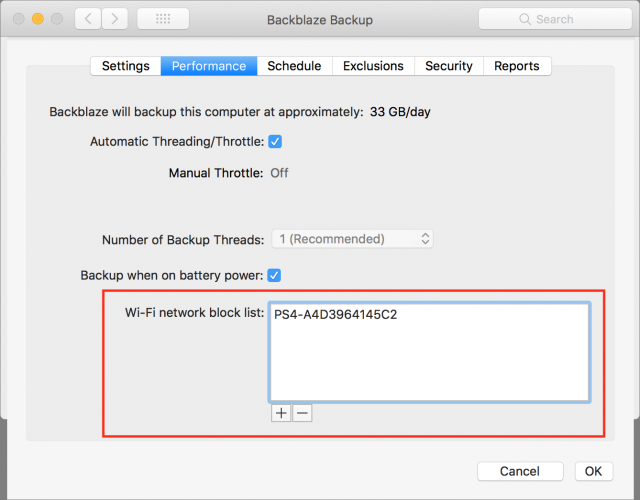
- Google single-sign-on: If you’re frequently logged into Google anyway, you can now use your Google account to sign into Backblaze and save time. Go to your Backblaze account settings and make sure you’re in My Settings. Under Security, select Google instead of My Email.
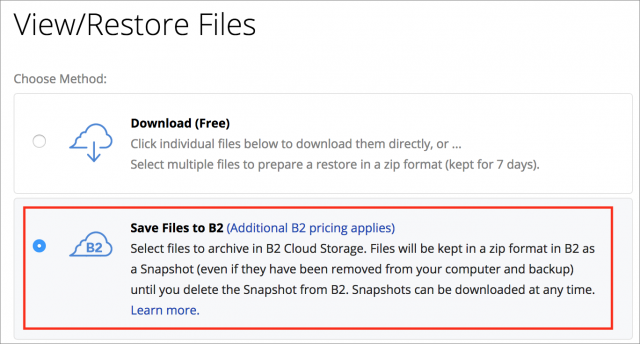
- B2 Integration: One of the main criticisms of Backblaze we’ve heard from TidBITS readers is that it retains only 30 days worth of backups. Backblaze has addressed that—sort of—by letting you save backed-up files to its B2 cloud storage service. In the interface for restoring files from Backblaze (see “How to Restore Files from Backblaze,” 24 August 2018), there is a new Save Files to B2 option. Files you save to B2 remain there until you delete them, but you’ll pay for the privilege—$0.005 per GB per month for storage and $0.01 per GB when you download the files. Those rates are among the lowest in the industry, but still an additional charge. Use this B2 Cost Calculator to figure out how much you’d actually pay for this service.
- Keep restores longer: Another aspect of the B2 integration is that you can archive a Zip file restore to B2, which might be useful if you need more time to download it or wish to keep a permanent copy stored in the cloud.
- iOS app: Backblaze’s iOS app has long been one of the service’s weak spots. To address its limitations, Backblaze has released a new version of the app with a cleaner interface, increased (though unspecified) file download size limits, support for time-based one-time passwords (ToTP), support for Touch ID and Face ID, Google single-sign-on support, and warnings for downloads over cellular networks.
Backblaze has been our preferred Internet backup service since CrashPlan left the consumer space (and my personal preference for years). However, you shouldn’t rely on it—or any Internet backup service—as your only backup. Ideally, every Mac user should have three forms of backup:
- Time Machine for everyday backups and restores of older file versions
- A bootable duplicate for fast file restores and so you can get up and running quickly again in case of a drive or computer failure
- An off-site backup like an Internet backup in case of fire, flood, or theft
Put those three together and you’ll be covered in every eventuality.
Nuance Has Abandoned Mac Speech Recognition. Will Apple Fill the Void?
In October 2018, Nuance announced that it has discontinued Dragon Professional Individual for Mac and will support it for only 90 days from activation in the US or 180 days in the rest of the world. The continuous speech-to-text software was widely considered to be the gold standard for speech recognition, and Nuance continues to develop and sell the Windows versions of Dragon Home, Dragon Professional Individual, and various profession-specific solutions.
This move is a blow to professional users—such as doctors, lawyers, and law enforcement—who depended on Dragon for dictating to their Macs, but the community most significantly affected are those who can control their Macs only with their voices.
What about Apple’s built-in accessibility solutions? macOS does support voice dictation, although my experience is that it’s not even as good as dictation in iOS, much less Dragon Professional Individual. Some level of voice control of the Mac is also available via Dictation Commands, but again, it’s not as powerful as what was available from Dragon Professional Individual.
TidBITS reader Todd Scheresky is a software engineer who relies on Dragon Professional Individual for his work because he’s a quadriplegic and has no use of his arms. He has suggested several ways that Apple needs to improve macOS speech recognition to make it a viable alternative to Dragon Professional Individual:
- Support for user-added custom words: Every profession has its own terminology and jargon, which is part of why there are legal, medical, and law enforcement versions of Dragon for Windows. Scheresky isn’t asking Apple to provide such custom vocabularies, but he needs to be able to add custom words to the vocabulary to carry out his work.
- Support for speaker-dependent continuous speech recognition: Currently, macOS’s speech recognition is speaker-independent, which means that it works pretty well for everyone. But Scheresky believes it needs to become speaker-dependent, so it can learn from your corrections to improve recognition accuracy. Also, Apple’s speech recognition isn’t continuous—it works for only a few minutes before stopping and needing to be reinvoked.
- Support for cursor positioning and mouse button events: Although Scheresky acknowledges that macOS’s Dictation Commands are pretty good and provide decent support for text cursor positioning, macOS has nothing like Nuance’s MouseGrid, which divides the screen into a 3-by-3 grid and enables the user to zoom in to a grid coordinate, then displaying another 3-by-3 grid to continue zooming. Nor does Apple have anything like Nuance’s mouse commands for moving and clicking the mouse pointer.
When Scheresky complained to Apple’s accessibility team about macOS’s limitations, they suggested the Switch Control feature, which enables users to move the pointer (along with other actions) by clicking a switch. He talks about this in a video.
Unfortunately, although Switch Control would let Scheresky control a Mac using a sip-and-puff switch or a head switch, such solutions would be both far slower than voice and a literal pain in the neck. There are some better alternatives for mouse pointer positioning:
- Dedicated software, in the form of a $35 app called iTracker.
- An off-the-shelf hack using Keyboard Maestro and Automator.
- An expensive head-mounted pointing device, although the SmartNav is $600 and the HeadMouse Nano and TrackerPro are both about $1000. It’s also not clear how well they interface with current versions of macOS.
Regardless, if Apple enhanced macOS’s voice recognition in the ways Scheresky suggests, it would become significantly more useful and would give users with physical limitations significantly more control over their Macs… and their lives. If you’d like to help, Scheresky suggests submitting feature request feedback to Apple with text along the following lines (feel free to copy and paste it):
Because Nuance has discontinued Dragon Professional Individual for Mac, it is becoming difficult for disabled users to use the Mac. Please enhance macOS speech recognition to support user-added custom words, speaker-dependent continuous speech recognition that learns from user corrections to improve accuracy, and cursor positioning and mouse button events.
Thank you for your consideration!
Thanks for encouraging Apple to bring macOS’s accessibility features up to the level necessary to provide an alternative to Dragon Professional Individual for Mac. Such improvements will help both those who face physical challenges to using the Mac and those for whom dictation is a professional necessity.
CES 2019: Pepcom Shows Off Futuristic Displays and More
Pepcom Digital Experience is the second of the three breakout shows at the start of CES. The booth that jumped out at me from the advance exhibitor list was a company named Delos, leading me to expect that their demo would be killer robots taking us hostage in the buffet line. Apparently, the company’s lawyers are unaware of the existence of popular TV shows like Westworld. (In real life, Delos is a “wellness real estate” company backed by Deepak Chopra, which was all I needed to know that I wouldn’t find their health claims credible.)
Puppy Cube S Digital Projector
Although the Puppy Cube S comes from a company called Puppy Robotics, it is merely a featureless, non-ambulatory black cube that shows no overt interest in overthrowing humanity. In fact, it’s a “short throw” digital projector, meaning that you can place it just 22 inches (56 cm) away from a vertical surface and it will project a 720p 100-inch display on it. Most such projectors I’ve seen need more space—I can see the Puppy Cube S being useful in conference rooms and such where there is minimal table space next to the wall. As an added trick, if you stand the Puppy Cube S on its end, the projector creates a 23-inch touchscreen display on the table via motion tracking. You can’t use it as a touchscreen for your Mac because the projector doesn’t relay the motion tracking data back to the computer. Instead, the projector runs a custom version of Android and runs apps that process that data. I can’t think of a case where the “project on wall/project on table” options would be useful back-to-back, but it provides an interesting range of choices. The Puppy Cube S will ship in March 2019 for $1299; the existing model, the Puppy Cube, has less memory and no gesture controls, and is currently available on Indiegogo for $899. (Note that the company’s initial campaign raised over twice what was needed, but it has sold only 5 out of 250 units since, sending mixed messages about the future prospects for these products.)
Royole Flexible Displays
Royole is making waves here with its FlexPai phone that unfolds into a tablet. (Because apparently, mimicking Westworld is the hot trend of 2019.) But I couldn’t get any hands-on experience with the FlexPai at the company’s booth, and initial indications are that I shouldn’t bother. On the other hand, I loved another prototype Royole had for demonstration: a full-sized Bluetooth keyboard printed on a flat piece of plastic that rolled up into a cigar-sized cylinder. (The black plastic base in the photo is part of the booth display, not the keyboard.) Unfortunately, this product has no name, no price, and no release date—even asking those questions caused a bit of confusion. This isn’t the first time we at TidBITS have cheered for Royole’s ideas but been somewhat let down by their products (see “The Dark Side of the Royole Moon,” 25 April 2018), but I’m hoping I can tell you this keyboard is shipping at a future show.
KeyHero Physical Key Backup
I arrived at Pepcom planning to mock the Hillman Group’s KeyHero—it’s a cloud service for your physical, metal keys!—but the company quickly won me over. The premise is, go to any Home Depot in the US, place your key into the KeyHero scanner, and a digital copy of it will be stored in the company’s cloud service. If you ever lose your key, go back to Home Depot to cut a new one. Better still, if you want to give your key to someone, you can use the KeyHero app to authorize them to cut a new one at Home Depot. The company rep emphasized that the physical key is required for scanning—apparently, a competitor launched a similar service that required only a digital photo, which made it a cinch to steal other people’s keys. What’s not stored in KeyHero’s cloud services: a physical address or any other indication of what the key unlocks, so even if the service’s security is compromised, the information will be worthless to hackers. KeyHero machines are now available at all Home Depot locations, and the company is seeking other partners. The app and cloud storage are free, and the company has a refreshingly simple business model: “We sell keys. We want to sell more keys.”
Adero Trackers Create Smart Bags
Bluetooth trackers, which tell you where your stuff is, are such a perennial at CES that now they’re an entire product category. But Adero has an interesting spin on the idea: a combination of “tags” and “taglets” that create smart bags. Attach an Adero tag to any bag—it comes with a case that’s backed with adhesive—and a taglet to anything that you want to make sure is in the bag when you dash out. Press the tag, and if it lights green, you’re good to go. If it lights red, a phone app tells you what’s missing. Unfortunately, while the app can tell you where a smart bag is with the same tracker technology you’ll find in other gadgets, items with taglets don’t have the same feature. Tags come with a charger to re-up their batteries, which you’ll need to do every two months; taglets have permanent batteries that should be good for two years. Shipping now, but I’m a little perplexed by how Adero is sold: you can buy a Starter Kit for $119.99 with three tags and three taglets—that’s three bags with one item each, or one bag with three items and the other two tags left unused. Or there’s a Deluxe Kit for $199.99 with five tags and nine taglets. It seems to me that a better model would be to sell the tags in sets but then to allow individual taglets to be added. Adero is marketed to busy executives and parents, and I wouldn’t mind one for my Backpack of Peripheral Holding, but who in the market for something like this has so few items to track?
What3Words Geolocation
Geolocation description is a surprisingly unsolved system. We’ve had a system of latitude and longitude since the 18th century, but no one can remember the decimal places necessary to describe sufficient precision. We have street addresses, which work well until you arrive in a city where mixing up east for west can put you halfway across town, or rural areas where a single address can describe an area of 26,000 hectares. What3words has a simple trick that solves this: it has divided up the world into 3-meter squares—57 trillion of them—and has assigned each of them a static three-word address (and yes, it works in multiple languages). So if I want to tell you to meet me at a particular local Starbucks, I can tell you which of the eight different stores you should go to, or I can say “meet me at ///couches.arrow.rings”. Or I can wait until I arrive and then send you the grid square corresponding to my actual table—it will be different than the one at the door. One key underlying premise of the system: for any address you speak aloud to a human or a device, What3Words addressing will be easier to understand and harder to confuse—get a word wrong and you’ll know immediately because that address will be in the Sahara Desert instead of 20 miles away. What3words is free to use, and addresses can be looked up in an iOS app or a companion Web site. Obviously, this system is far easier to use when people already understand what it is, so What3words is attempting to license the database for inclusion with other systems—at the show, the company has announced partnerships with Mercedes-Benz, TomTom, AirBnB, Lonely Planet, and Domino’s Pizza, among others.
HYPERVSN Solo Holographic Display
I’m not expecting to still be alive when CES exhibitors start demoing Star Trek holodecks—although I’m happy to be surprised—but magical 3D displays are expected by pretty much everyone here to be a thing someday. It won’t be soon, though, since 3D TVs failed to catch on—they gave me and enough of the buying public a headache and never caught on. In the meantime, there’s HYPERVSN’s eye-catching Solo series of holographic displays. A fan of spinning blades creates the image but moves too fast for the eye to register, so the result is an image that appears to hang in mid-air, with some flickering—think Princess Leia’s holographic message in the original Star Wars. The 3D effect is added with standard 2D rendering, but because the display surface is invisible, it fools the eye. HYPERVSN is available for purchase, lease, or rental, and is clearly intended for the kind of companies who set up trade booths and don’t care much about price—neither the press materials nor Web site deign to mention how much it costs.
CES 2019: ShowStoppers Demos Smart Ovens, Big Batteries, and More
ShowStoppers takes place on the first regular day of CES, where I was most impressed by news from an outlet that isn’t at the show. That morning, the NPR hourly news team thought it worth reporting that Apple had covered a hotel with a 13-story billboard chiding Google for its security practices.
From the Las Vegas Convention Center, you couldn’t miss the display. I’m sure it wasn’t cheap, but compare that expense with the millions of dollars for large displays at the show and other costs. Samsung alone has enough people in town to devote a private fleet of limos shuttling them around. Apple hasn’t exhibited at CES for ages—the company gave up on trade shows because it gets better press coverage with its own events—but at 9 AM Pacific, that billboard wasn’t merely top news from CES, it was noteworthy enough to be one-tenth of NPR’s top news, period.
I suspect that has Google marketers—who brought a roller coaster this year—are grinding their teeth so badly that they’re at the CES Digital Health Forum asking about dental technologies.
Note: A few products below were held over from the Pepcom show because I was still confirming some details (see “CES 2019: Pepcom Shows Off Futuristic Displays and More,” 11 January 2019).
Abbott Freestyle Libre Glucose Monitoring
If you’re diabetic, tracking your blood sugar the traditional way is not fun. The standard method is to prick your finger and put a drop of blood on a measurement device. And if you want to stay healthy, you might do that a few times a day because blood glucose varies. The Freestyle Libre is a 14-day sensor that you apply to your arm with a patch. A painless subcutaneous probe measures glucose continuously and relays that data to a standalone reader or an app on your iPhone. As with most American medical devices, the price varies based on your insurance and the phase of the moon—Abbott says that most people with commercial insurance will pay $40–$75 per month.
Arcade1Up Arcade Cabinet
If you frequently ran out of quarters in the 1980s, you might be interested in the Arcade1Up Wall-Cade, a mini-version of the old freestanding cabinets. They’re designed to be set on a desk, hung on a door, wall-mounted, or set on the floor with a riser. They come with a selection of vintage games designed for the full-sized controls in each. There are currently six models available—the one with Rampage, Joust, Gauntlet, and Defender is clearly the best. At CES, the company announced that five more collections would ship in 2019: Final Fight, Space Invaders, Golden Tee, Mortal Kombat, and Karate Champ, and more to be announced at the E3 show in June. Each will set you back 1196 quarters or $299.
June Smart Oven
One sure way to catch the attention of passing journalists is to stand in front of your product with a tray of freshly baked cookies. The June smart oven is a space-saving kitchen multifunction gizmo—it works as a convection oven, air fryer, dehydrator, slow cooker, broiler, toaster, and warmer—with built-in smarts to automatically cook many items with pre-programmed cooking cycles. Shove your food in, and a camera will attempt to figure out what it is and suggest a cooking method. A smartphone app lets you remotely monitor your dinner’s progress so you don’t have to stand in front of the display. A subscription service brings you regularly updated recipes for the June’s database, and a partnership with Whole Foods lets you pick ingredients at the store and have the June app suggest what to do with them. It’s reportedly big enough to cook a 12-pound turkey (12.75 x 19.6 x 19 inches, or 32 x 49 x 48 cm), or presumably a 14-pound turkey if you whack it enough with a hammer. The June ships next month for $599 with some accessories; another $200 adds more pans and baskets, a three-year recipe subscription, and a two-year warranty.
Moasure ONE Measuring Device
You might have a Measure app built into your iPhone these days, but not everything you have to measure is line-of-sight. The Moasure ONE is a handheld measure that can work with distances and angles regardless of what’s between them. Place the Moasure ONE at the beginning of what you want to measure, tap the big green button to start the measurement, and then place the device at the end of the measurement regardless of any walls or hyperactive children between the two points. Currently in production and available for pre-order at $149, the Moasure ONE will ultimately retail for $249. A free app will turn your iPhone into an ersatz Moasure ONE with lower precision. The executive who gave me his card said that Moasure was named after the word “measure,” and I’m sure it’s just a coincidence his name is Mo.
MPowered Luci Solar Lamps and Chargers
Every once in a while you run across a company looking to do well by doing good, and MPowered qualifies in spades. Its Luci ? series of low-power LED lamps and chargers all have built-in solar chargers, and MPowered makes them available in parts of the world without reliable access to electricity. The Luci Connect model, which costs $65 and is available this month, charges in 14 hours by solar or 2–3 hours by USB, and it provides up to 50 hours of light or 2000 mAh to charge your devices. 12 RGB LEDs accompany the 24 white ones, and a smartphone app lets you set any color you like. The company’s product line starts at $14.95, and if you feel so inclined, you can donate $10 to provide lighting to people who otherwise don’t have any.
Mute+ Alexa Silencer
Hey, who doesn’t love the fact that Alexa devices continuously record you and sometimes send those recordings to your friends? You? You don’t love that? Enter Smarte’s Mute+, a $24.99 timed dampener that sits on top of your Amazon Echo, Echo Plus, or Echo Dot. Set it to how long you want to prevent your Echo from listening to you, and a series of LEDs remind you how long until it turns off. Oddly, the maximum time you can block the Echo from listening is one hour. Sure, you could do the same thing by upending a vase and using it as Cone of Silence, but then you have to remember to remove it. Horrifying.
Mycroft AI Mark II Voice Assistant
If you want to ask a device to tell you the weather, play streaming music, and control your home automation, but you don’t trust Amazon, Google, or even Apple to do the right thing with your data, you’ve been out of luck. Mycroft AI intends to fill this gap with its Mark II voice assistant, shipping in April 2019 for $189. The key selling point of the Mark II is that it’s entirely open-source—that means that anyone with suitable skills can download all the programming that goes into it and see exactly what it’s doing and what data it’s sending. But it’s still a cloud device for most questions, so you still have to trust Mycroft AI to do the right thing—you can’t see what the company does with the data it gets. That said, a commitment to open source is congruent with the right privacy intentions. Users can opt-in to improve what questions the Mark II can handle by submitting what they’d like to ask—which is another way of saying that it won’t integrate with Siri, Google Assistant, or Alexa, and you can’t necessarily use it to control devices in those ecosystems. Kind of the point, but also kind of limiting.
OmniCharge Mobile and Ultimate Batteries
It’s impossible to sneeze at CES without getting a rechargeable battery wet, but OmniCharge’s offerings stand out by virtue of their huge capacities. The Omni Mobile 26,800 mAh is the largest battery allowed to fly on a plane, will charge your 13-inch MacBook Pro as fast as its charger, and comes with USB-C, USB-A, and DC-out ports. It costs $149.99, but you can get it for $99 on Indiegogo. Meanwhile, the Omni Ultimate has a ridiculous 40,300 mAh (at that point, just call it 40.3 amp-hours) and includes a regular plug like the one in your wall. If that’s not enough, the battery is hot-swappable and you can buy extras. It’s currently $349 on Indiegogo and shipping this month—once it’s available for retail, the expected price is $599.
Tablo Quad Over-the-Air DVR
In a world of fiber-optic services and Netflix, it’s easy to forget that you can still get TV over the air (OTA to industry wonks), even if you’re a cord-cutter who doesn’t subscribe to any cable channels. But there are still channels out there in the ether—and digital broadcast means four times as many channels as you used to get on rabbit-ear antennas. (Digital broadcasts also mark the end of the old television static that, believe it or not, was caused by cosmic rays. With digital broadcast, you either get a clear image or nothing at all.) DVRs have been around for a while to provide on-demand recordings of OTA, but the Tablo Quad ups the ante with four different tuners. If you still need to decide which shows to record, you’re watching too much TV. The Tablo Quad includes a suite of apps that can throw your recordings to pretty much any device you can think of, including your Mac and iPhone, and if you subscribe to its monthly service you don’t need to be home to watch them. (You’ll want to subscribe, otherwise you don’t get TV listings to help you set recordings.) The subscription also includes an automatic commercial-skip feature, now in beta. The Tablo Quad costs $179.99, but you’ll need to add your own hard drive (either an external USB or an internal SATA), because in the words of the company exec, “my customers can buy drives cheaper than I can.” An 8 TB drive can store 4000 hours of TV, which should keep you going for a while. After the initial month, the subscription service will run you $4.99 per month. It’s slated to become available in March 2019.
YubiKey USB Authentication
It’s been two years since I last covered Yubico’s YubiKey ? (see “CES 2017: From Laundry to Play-Doh at Showstoppers,” 9 January 2017), a USB authentication device that prevents people from logging into your accounts if they don’t have the physical hardware. Since then, YubiKey has improved ease-of-use, which was desperately needed. At the company’s Web site, you’ll find step-by-step instructions to set up hardware authentication for popular services. The YubiKey 5 Series optionally allows password-less authentication—in which case the hardware is the only way in—but then you’re no longer two-factor. The best practice is to buy two YubiKeys and register both for your accounts, so if you lose one, you can fetch the other from the safe location where you stored it. YubiKey 5 Series keys come in USB-A and USB-C varieties and in two form factors: a USB stick, and a flat “nano” profile designed to be left permanently in a USB port. Available now, for between $45 and $60.

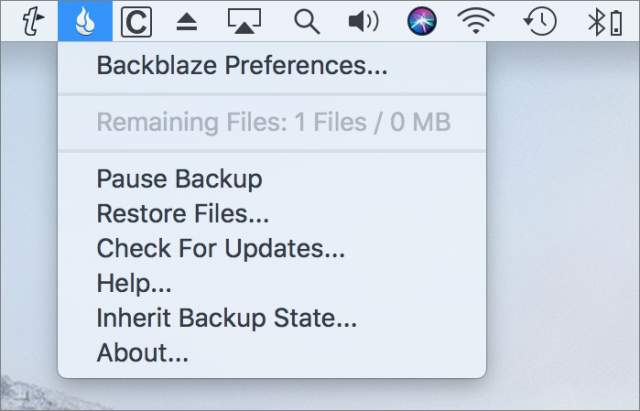
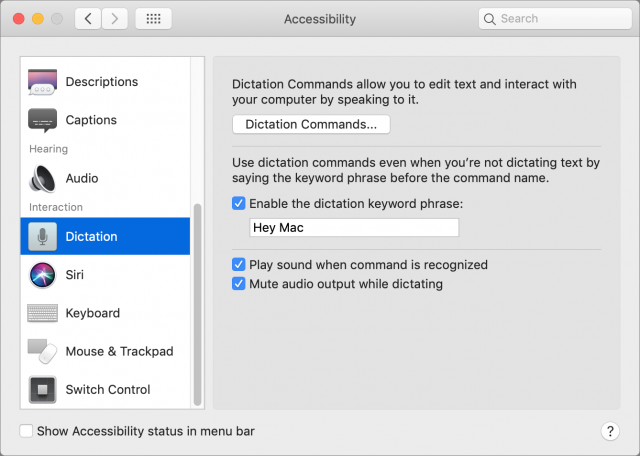
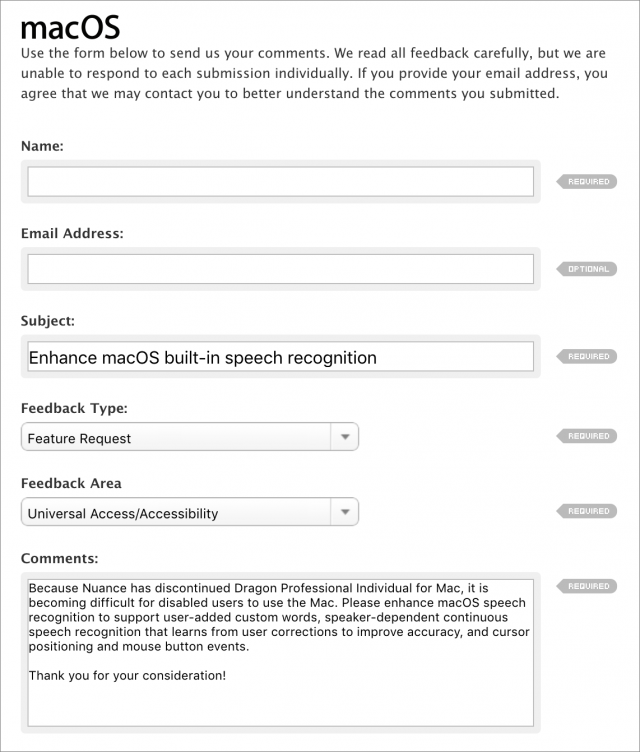
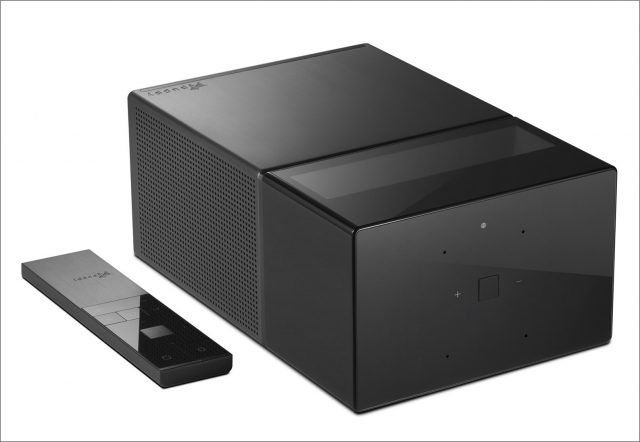
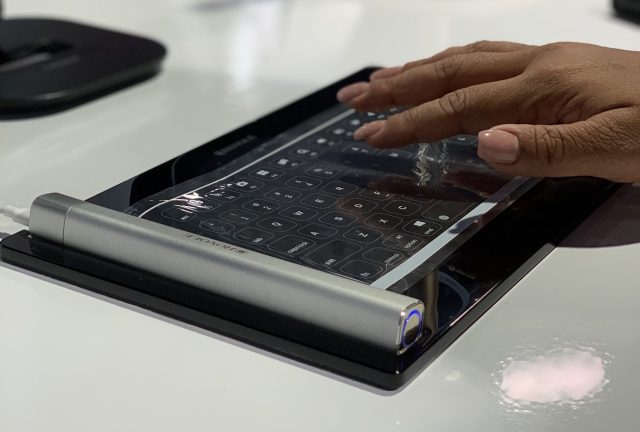
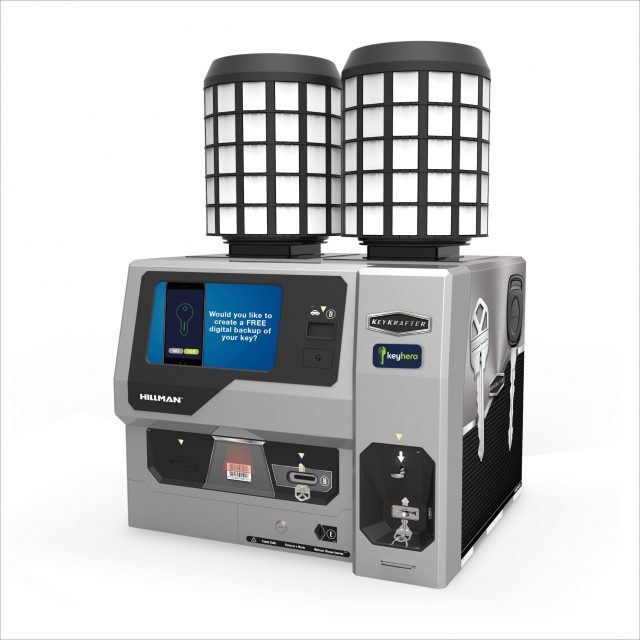
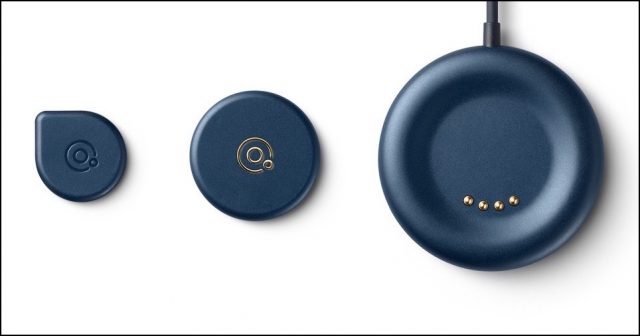


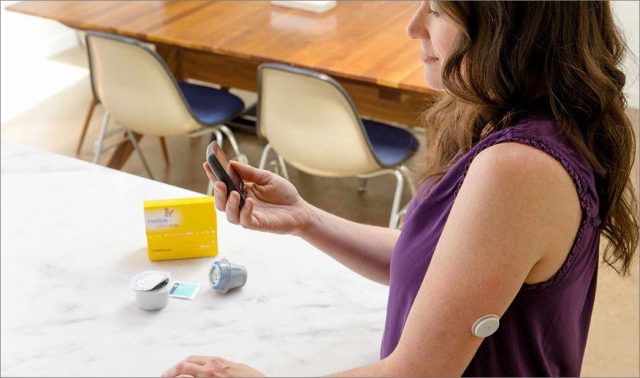
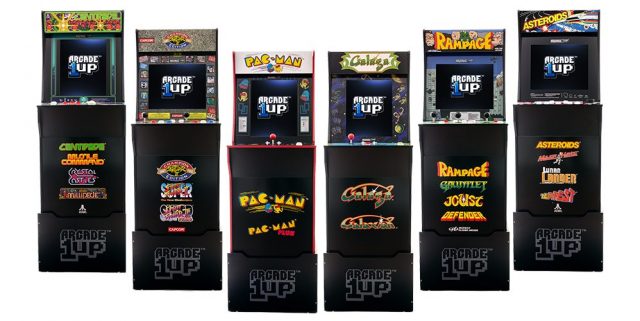
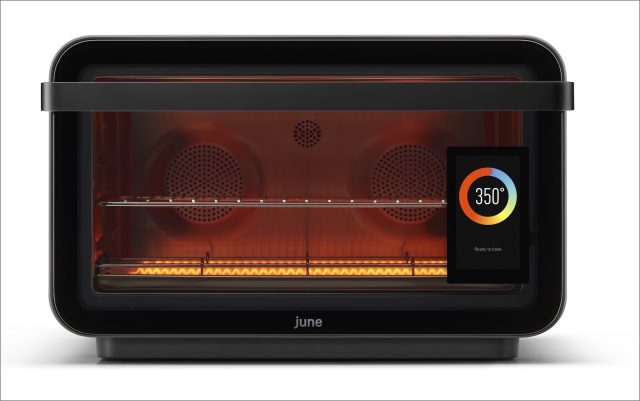
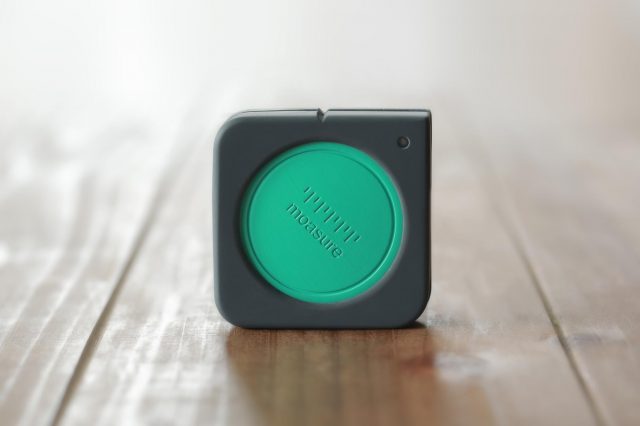

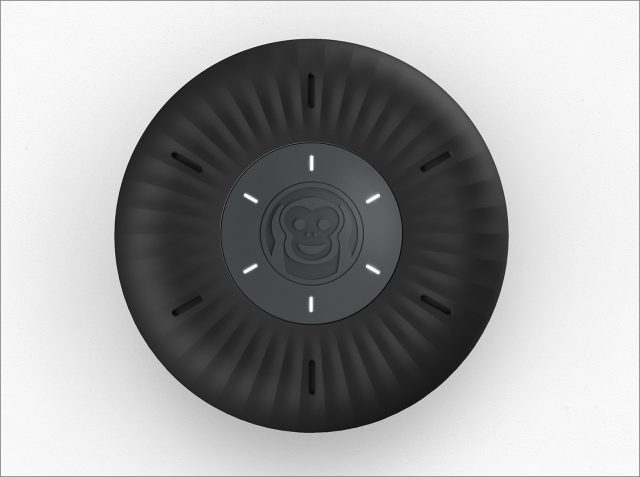
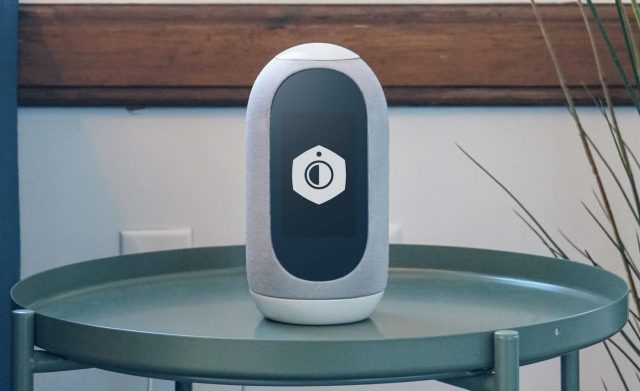
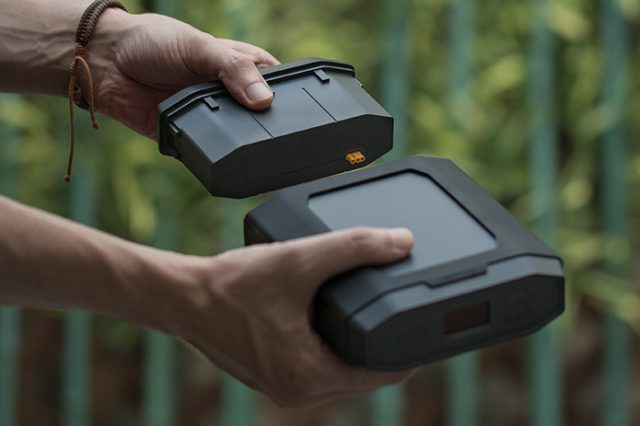
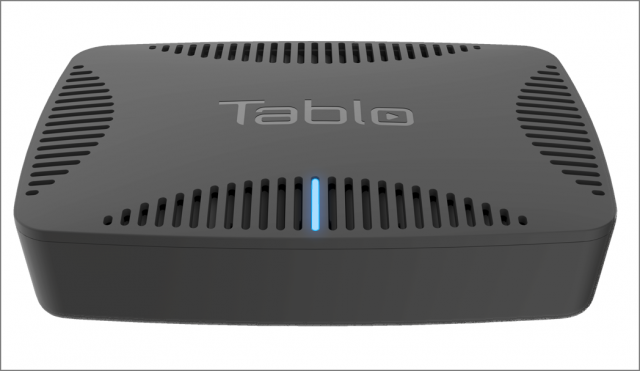
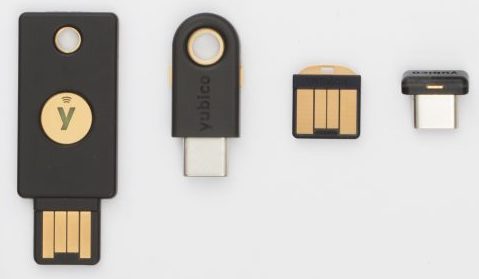
 Josh Centers
1
comment
Josh Centers
1
comment
 Josh Centers
4
comments
Josh Centers
4
comments
 Josh Centers
1
comment
Josh Centers
1
comment
 Adam Engst
6
comments
Adam Engst
6
comments